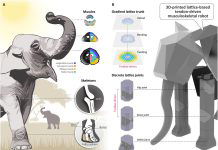
A team of researchers, including Georgia Tech’s Assistant Professor Bo Zhu, has made a huge leap in the world of computer graphics, blending the power of artificial intelligence (AI) with computer simulations to bring natural phenomena like tornadoes, underwater vortices, and liquid foams to life like never before.
This breakthrough, outlined in their award-winning paper, paves the way for creating even more realistic simulations of the natural world.
The team’s work, recognized with a best paper award at the prestigious SIGGRAPH Asia conference, has been compared to a major advancement in computer vision known as neural radiance fields (NeRFs).
Just as NeRFs transformed how we turn 2D images into 3D scenes, Zhu and his colleagues hope their “neural flow maps” will revolutionize computer graphics simulations, offering a new benchmark for accuracy and realism.
Traditionally, simulating natural phenomena in computer graphics involves complex mathematical equations. While these methods have their merits, they often fall short in capturing the full complexity of nature’s dynamics.
Zhu’s team aimed to overcome these limitations by integrating AI with these traditional techniques, creating a new framework that enhances simulation accuracy and efficiency.
Neural flow maps, the innovative approach introduced by Zhu and his team, are designed to store and manage data about movements and changes in space and time more effectively.
By aligning machine learning models with mathematical equations, the researchers achieved unprecedented accuracy in their simulations, making scenes of swirling tornadoes and bubbling foams more realistic than ever.
Zhu believes that the future of simulation lies not in abandoning traditional methods but in enhancing them with AI. This co-design approach leverages the best of both worlds: the precision of numerical methods and the vast computational capabilities of modern AI.
This synergy allows for the creation of simulations that were once beyond reach, opening up new possibilities for research and application in computer graphics and beyond.
The impact of neural flow maps extends far beyond just making more realistic movies or video games.
It signifies a new era where the fusion of physics and AI can unlock a deeper understanding of the natural world and how we replicate its complexities in digital form. Zhu’s work is a testament to the power of interdisciplinary collaboration, showing how advancements in one field can inspire and elevate another.
As we look to the future, the success of neural flow maps highlights the potential for further breakthroughs in computer graphics and computational science.
It’s an exciting time for researchers and enthusiasts alike, as we stand on the brink of a new frontier in digital simulation, where the lines between the virtual and the real continue to blur.
Source: Georgia Institute of Technology.



